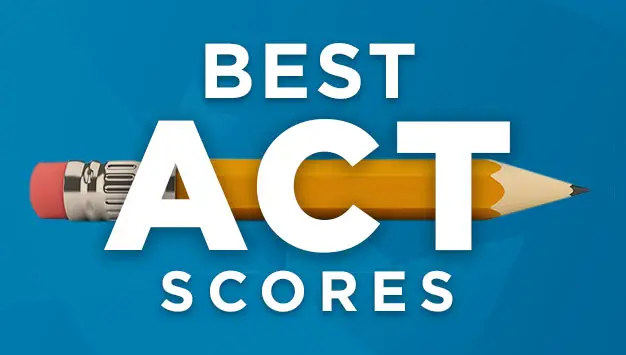The ACT does its best to release the results as soon as possible. However, it does not guarantee that you will get your scores exactly on the specified date. Instead, the institution commits to windows of time to report the results. The typical timeframe is between ten days and eight weeks. Here are the closest test days and results delivery periods:
| National Test Date | Reporting Timeframe |
| February 6 | February 19 – April 2 |
| April 17 | April 27 – June 11 |
| June 12 | June 22 – August 6 |
| July 17 | July 27 – September 10 |
The ACT releases the scores through its online portal, MyACT. The other way you can get your results from the ACT is by mail. The organization does not send scores by email, fax, or neither it consults about the marks over the phone.

Typically, you will get your Math, Science, Reading, and English scores in two weeks. And checking essays takes another two weeks. However, the ACT states that sometimes they cannot release scores as promised and offers to consider several reasons for that:
- you did not transfer payment, or it has not arrived for some reason;
- your documents were delivered with a delay. This is also possible when the test date was changed;
- something irregular happened at your test center;
- there are mismatches between your name, Match Number, or date of birth and the information stated on your admission ticket.
Where Can I Know My Results?
Your ACT report is available on your MyACT web account. MyAct is also available on mobiles and tablets. You can see your scores through the ‘Scores’ menu or have them displayed on the main page. The new report format shows score details and other career-related information. If you need a paper document, you can print out only the unofficial version of the document.
How Will My Results Get to College?
When you receive your ACT score, it is kept as a separate result in the ACT system. If you take it several times, you will get each score available for sending to colleges. It’s up to you to choose which test result should be forwarded to the admission committee. The only exception is that you can not submit the results of different sections of the tests taken on different dates. For instance, if you got 25 for Math and 27 for Reading last time, and this time you receive 30 for Math and 23 for Reading, you can’t send the highest scores of 30 for Math and 27 for Reading.
When you register for the ACT, you can choose four colleges where the ACT will officially send this attempt’s scores. If you suddenly change the list of colleges, you can still do that before the test free of charge (check the exact deadline). If you want to send your results to more than four colleges, you request this additionally, but you will have to pay $15 per one report. In case you need to send older results, an archive fee of $26 is added to the standard price. Please remember that ACT automatically sends only current results –– you will not be able to use a ‘free’ option to retrieve and send your older scores to colleges.
Ordering reports at registration requires no fee, but on the other hand, you cannot be sure of your score. There is always a risk of sending poor results. Besides, you can not cancel sending the reports after the test date.
There are two issues you need to remember about submitting your scores to colleges:
- check the policy of the college you are applying to as it may require all of your ACT results;
- check the deadlines of scores submission in the colleges. If you opt to send results after you know them, please note that colleges may receive them only in 2-3 weeks. So, schedule the process accordingly;
- check the College Code List before sending a request, especially when there are several campuses.
- the ACT sends your results only to the addresses that agencies and colleges provide. So you can not request delivery to the address you mention;
- you will need to determine the location accordingly if you had two tests in one month and ask for sending results.

The ACT Structure
ACT is an exam that tests your academic readiness for college, and, together with the SAT, this test result is considered by many colleges. Of course, there are several factors that colleges and universities use when admitting students; however, ACT score makes a difference.
The ACT tests your knowledge in four obligatory subjects and one optional: English, science, math, reading, and optional writing. The report shows your scores in each section and also the composite, STEM, and ELA scores. Also, you will see the US and State Rank and detailed results.
There are raw and scale points in every ACT test. The raw scoring means that for each answered question, you get one point. Each incorrect or skipped question does not add points; however, it does not deduct them. So, you will not be penalized for not knowing the answer. Then the raw score (0-60 marks) is converted into the scaled points (0-36 marks).
The test’s total time is 2 hours 55 minutes without the Writing section and 3 hours and 35 minutes, including the essay.
You can attempt the ACT seven times a year in Puerto Rico and the US territories:
- in winter (February and December);
- in spring (April);
- in summer (June and July);
- in fall (September and October).
International test centers allow only six ACTs a year. The months of the internationally arranged tests are the same except for July.
ACT exams are always attempted on Saturdays. However, if your religion does not allow such activity on Saturday, the date will be shifted to Sunday. You will need to arrive at 8:00 to allow time for the registration procedure and start your test at 08:30. The ACT always arranges the tests in such an order: English, Math, 15-minute break, Reading, and Science. Those who take the writing test have a 5-minute break and then have an essay.
Math Section
The math section evaluates your math knowledge across three subcategories: Modeling, Integrating Essential Things and Preparing for Higher Math. There are 60 multiple-choice questions, and you are given 60 minutes to answer them.
The first two subcategories include 22 and 25 questions, accordingly. The Preparing for Higher Math subcategory consists of 35 questions that are split into five smaller sections:
– Number and Quantity (5 questions);
– Functions (8 questions)
– Algebra (8 questions);
– Statistics and Probability (6 questions);
– Geometry (8 questions).
The structure of the Math section allows about one minute for each question. Some problems will require less time, giving you extra seconds for more complicated solutions. However, track your time to approximately approach 10 questions for 10 minutes, 20 questions for 20 minutes, and so on.
Science Section
The Science section assesses your capability of problem-solving, interpretation, reasoning, and analysis. ACT gives you 40 minutes on 35 multiple-choice questions that fall into three subcategories:
– Evaluation of Models, Inferences, and Experimental Results (14 questions);
– Scientific Investigation (10 questions);
– Interpretation of Data (16 questions).
You will have to be able to read visually represented data in graphs, charts, and tables. Along with that, you are supposed to demonstrate an understanding of written passages. Try to quickly look through the questions before you read the text pieces. It will give you an understanding of what to focus on through the text. To successfully pass this section, you will appeal to your knowledge of biology, physics, chemistry, and earth science.
Spending around half a minute on each answer gives you, on average, two minutes to read each (of the six) passages and all related charts. This way, you will have three minutes for the final check of the whole section. Then you can try to approach the unresolved questions and guess the answers you don’t know.

STEM Score
The STEM (Science, Technology, Engineering, and Math) result shows your Math and Science sections’ performance.
Reading Section
The Reading section consists of four passages, each of which has 10 questions. The total time allowed for the section is 35 minutes so that you can spend not more than eight minutes on each big passage (or two smaller passages). If you try to spend three minutes reading and allow half a minute to answer questions, one passage’s timeframe will be equal to eight minutes. With such a plan, you will luckily have 3 minutes to reconsider and check answers.
The reporting categories of the Reading section are:
- Key Ideas and Details (24 questions);
- Knowledge and Ideas (5 questions);
- Craft and Structure (11 questions).
You may find it helpful to approach the easy questions first instead of answering them chronologically. Maybe you would spend less than the scheduled 30 seconds on such ‘simple’ questions, and it will let you save these seconds on something more time-consuming. But do not spend too much time on any of the questions. This may affect your overall performance in the Reading section. You will appeal to your knowledge of natural sciences, social studies, and humanities.
Except for the scores you get for each category and the total score, your Understanding Complex Texts is evaluated. You can fall into one of the three categories: below proficient, proficient, and above proficient. This assessment’s main purpose is to check your ability to understand the core idea and purposes in complex text pieces.
English Section
You will have to answer 75 questions in this section and 45 minutes for answering them. Such timing allows not more than half a minute per question. There are five reading passages, and each one is followed by 15 questions that test your ability to understand written text and English language conventions.
There are three reporting categories in the English section:
- Knowledge of Language (12 questions);
- Conventions of Standard English Grammar, Usage, and Punctuation (40 questions);
- Production of Writing (23 questions).
Be careful with this section, as answers are deliberately made similar. If it’s a one-sentence question, choose the most appealing answers. When you see a passage, try to take out the required information and avoid interpretations. This is the hardest and most confusing part that often misleads students –– interpretations.
The Detailed Results of your report will show the number of correct answers and the total number of questions. The percentages show how many correct answers you made. On the bars with this percentage, you will see the ACT Readiness Range. These infographics will help you understand how well you are prepared for college.
Writing Section
The Writing section is the only optional section of the ACT, and its scores are shown separately from the composite score. You will need to write an essay, and on this task, the ACT gives you 40 minutes. You will have three perspectives on a given issue. Your task is to share your views on the topic and refer to one of the proposed perspectives. To make the marking process more objective, two graders assess each essay across four domains:
- Development and Support;
- Language Use and Convention;
- Ideas and Analysis;
- Organization.
Test-takers can get a minimum of 2 and a maximum of 12 marks for each domain and all domains’ average scores.
You have to thoroughly think about the three ideas and create a plan for how they can help you get to your point of view. Your opinion may differ from the given ones; however, you need to demonstrate the ability to link your ideas and given viewpoints.
To approach the writing task, you are recommended to outline the structure of your essay. Remember that ACT testers will evaluate your logic and analysis rather than the number of words and how many of them will be obscure.
